Spanning the breadth of the River Thames, the Tower Bridge is one of the most iconic landmarks of modern-day London. It was inaugurated on June 30th, 1894 by King Edward VII and his wife Alexandra of Denmark, after eight years of construction. Its construction cost £1.184 million, which is equivalent to £132 million in 2018. Located in central London close to the renowned Tower of London, the Tower Bridge connects the City of London with Southwark. It is marked by two massive towers on either side of the bridge, with the middle portion capable of being lifted up to allow ships and boats to pass through. It is maintained by the Bridge House Estate, a charitable trust overseen by the City of London Corporation. The Tower Bridge is one of the most popular tourist attractions in London and it is listed as a Grade I structure in the heritage of England. Here are 10 interesting facts about the Tower Bridge regarding its history, construction, design and more.
#1 ITS DESIGN IS A COMBINATION OF BASCULE AND SUSPENSION BRIDGE
After the formation of a Special Bridge or Subway Committee in 1877, more than 50 designs for the Tower Bridge were received. Civil engineer Sir Joseph Bazalgette is credited with the first official proposal for the design, although it was rejected. A design was ultimately approved in 1884 with the decision to make a bascule bridge to provide clearance for boat traffic. A bascule bridge is a type of bridge with a section which can be raised and lowered using counterweights. The construction of the Tower Bridge started in 1886. The engineer of the bridge Sir John Wolfe Barry designed a bascule bridge while also adding two bridge towers. Thus, while the central portion of the bridge undertook a bascule design, the two-side spans were added as suspension bridges. A suspension bridge is supported by strong steel ropes hung from a tower at each end of the bridge. This allowed the deck to be hung below the suspension cables on vertical suspenders, adding more weight carrying capacity to the design.

#2 THE TOWER BRIDGE INCLUDES HIGH-LEVEL WALKWAYS
Since the bridge makes use of a combination of both the bascule and the suspension bridges, it brings together the best of both worlds. This was a befitting solution from the City of London Corporation to the challenge of building a bridge without disrupting the activities of the river. Until the year 1910, Tower Bridge also consisted of high-level walkways that allowed pedestrians to cross the bridge even when the bascules were raised. They were later closed since most of the people preferred to wait on the streets, as opposed to walking up a fleet of stairs with their loads. However, they were opened again in 1982 as a part of the new Tower Bridge exhibition. Thus today visitors can access the high-level walkways again for mesmerizing panoramic views of the Thames and London.
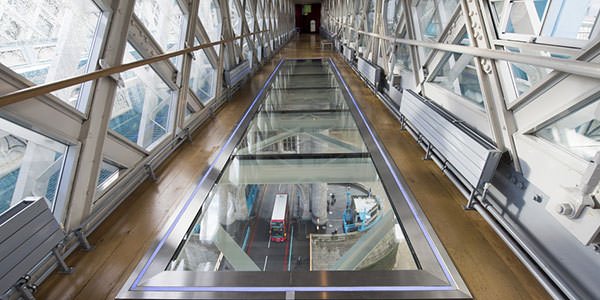
#3 THE CONSTRUCTION OF THE BRIDGE WOULD COST £132 MILLION IN 2018
It took eight years to build the Tower Bridge with five major contractors and a total of 432 construction workers. Construction started in 1886 and the bridge was complete by 1894. During the process, over 70,000 tonnes of concrete were poured onto the bed of the Thames creating two massive piers to provide a strong foundation for the bridge. To provide the framework for the towers and walkways, over 11,000 tonnes of steel was used. The total cost of the construction stood at £1.184 million, which is equivalent to £132 million in 2018.
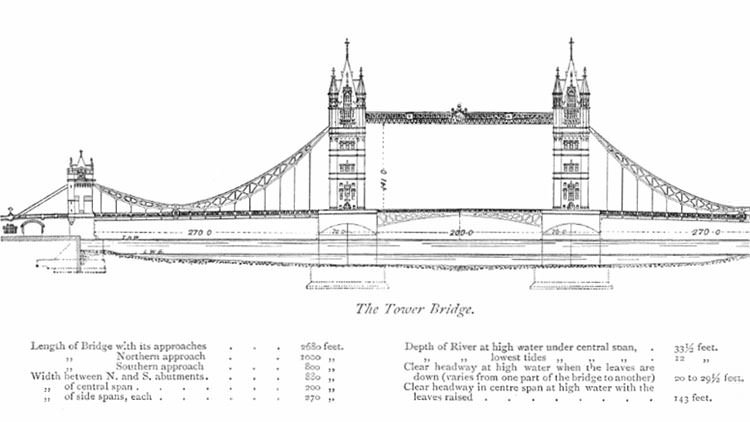
In 2008, renovation for the bridge was undertaken, taking 4 years and an investment of around £4 million. Today, more than 40,000 people cross the bridge every day. The length of the bridge spans 244 metres (800 feet) with each tower being 65 meters (213 feet) high. The bridge’s bascules are raised around 1000 times a year to allow for the passage of ships and boats. Although, this can only be done with a 24-hour notice received from the oncoming river traffic.
#4 CONSTRUCTING THE BRIDGE WAS REGARDED AS A DANGEROUS JOB
At the time of its construction, working on the Tower Bridge was a dangerous job with several tragic fatalities. On 25th April 1888, 20-year-old Richard Bacon died during the construction process when he fell from one of the large cases that were lowered into the Thames in order to build the piers. Also, the salaries of workers were quite low and hovered around one pence per rivet for complete worker teams. The job was also associated with a significant amount of physical exertion and the constant hammering of rivets often became the cause of hearing loss among the workers. Some riveters have also been documented to have burn scars on the sides of their arms. One can imagine the resulting toll of hammering millions of rivets to make the bridge what it is today.
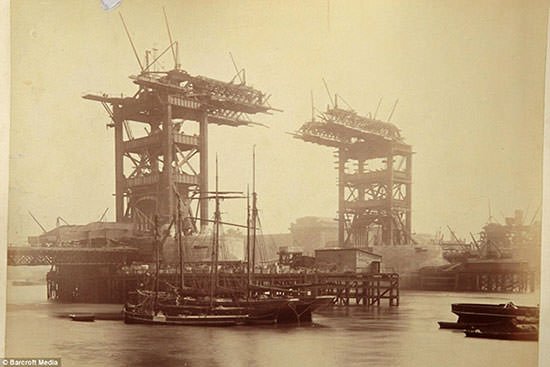
#5 IT WAS SEVERELY CRITICIZED FOR ITS DESIGN IN THE EARLY 20TH CENTURY
Although today the Tower Bridge is one of the most famous bridges in the world, its aesthetics were subject to heavy criticism by professional commentators in the early 20th century. For example Frank Brangwyn, a notable artist and designer, described the bridge to be, “A more absurd structure than the Tower Bridge was never thrown across a strategic river”. However, in 1938, the New York Times film critic, Benjamin Crisler, wrote: “Three unique and valuable institutions the British have that we in America have not: Magna Carta, the Tower Bridge, and Alfred Hitchcock.” Also, in a 2002 BBC documentary, the Tower Bridge was selected as one of the four best buildings in Great Britain by historian Dan Cruickshank.
#6 TOWER BRIDGE IS ONE OF THE MOST POPULAR TOURIST ATTRACTIONS IN LONDON
The Tower Bridge, with its two huge towers rising 200 feet above the River Thames, is one of the most popular tourist attractions in London. One of the most famous tourist activities is taking photographs of the Tower Bridge. The walkway between the two bridge towers allows one a breathtaking view over the London skyline. The inside of the bridge sports the Tower Bridge Exhibition from where visitors can observe the Victorian engine room; learn about the history of the bridge; and view numerous photographs and videos related to the bridge. During the London Olympics of 2012, the Tower Bridge showcased the 5 rings of the Olympics, which weighed around 12 tonnes. Later, in 2014, glass floors were installed on the walkways of the bridge allowing visitors to observe from above the traffic buzzing through the Tower Bridge.
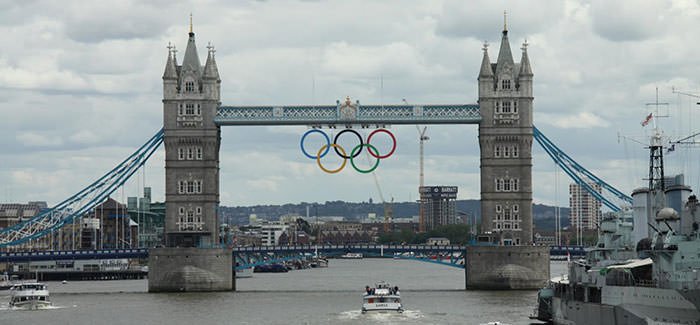
#7 IT IS OFTEN CONFUSED WITH THE LONDON BRIDGE
The Tower Bridge is often mistaken for the London Bridge. Some even believe the bridge to be the one being referred to in the song “London Bridge is falling down”. This, however, is a common misconception, probably because the London Bridge is also located on the Thames, 0.5 mi (0.80 km) upstream. Other reasons for this confusion can be attributed to the design of the bridges, both of which contain elements of the Gothic design. George D. Stevenson added the Gothic style to the design of the Tower Bridge after he took over the project in 1886. He did this in order to blend its design with the nearby Tower of London. Although London Bridge also has a Gothic design, it has been constructed in a way which is more practical rather than attractive.
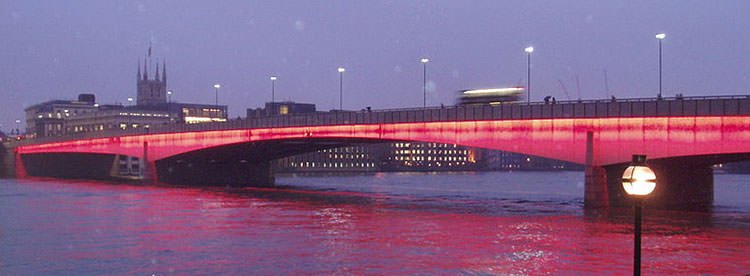
#8 AVIATOR KENNEDY MCCLEAN FLEW HIS PLANE BETWEEN THE TOWERS OF THE BRIDGE
The Tower Bridge has been a constant source of attraction for adrenaline junkies and showmen. The pioneer aviator Lieutenant-Colonel Sir Francis Kennedy McClean undertook the first attention-grabbing aerial display at the bridge on August 10, 1912. He flew his Short Brothers S.33 floatplane in between the towers and underneath the high-level walkways. In 1917, Thomas Hans Orde-Lees, a pioneer in the field of parachuting, jumped off the high-level walkways of the Tower Bridge into the Thames, dragging a cloud of dark cloth with him. Apparently, he was trying to convince the Royal Flying Corps of the benefits of introducing parachutes for the pilots of the then young Royal Air Force. Eventually, his demonstration was successful and the bridge became the birthplace of the Royal Parachute Regiment.
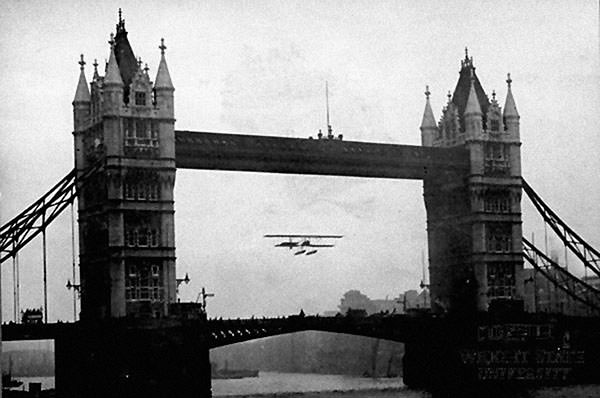
#9 THE BRIDGE ONCE OPENED FOR RIVER TRAFFIC WHILE A BUS WAS ON IT
In 1952, a double-decker bus (the number 78) was crossing the Tower Bridge when suddenly the bascules began to rise. At that time the gate-man would ring the bell and close the bridge when the bridge rose for river traffic. However, the process failed during this instance. Fearing for the life of the passengers, the driver, Albert Gunton, did not stop or slow down the bus. He instead accelerated the bus, jumping from the south bascule to the north bascule. He cleared a 3-foot (0.91 m) gap to drop 6 feet (1.8 m). Thankfully, the north bascule had not begun to rise yet, and the bus landed safely. Only a few minor injuries were reported. To reward his bravery, the City Corporation gave Gunter £10 (equivalent to £280 in 2018). In another recent incident in 1997, the Tower Bridge unexpectedly opened during the passing of the motorcade of President Bill Clinton, splitting the convoy into two.
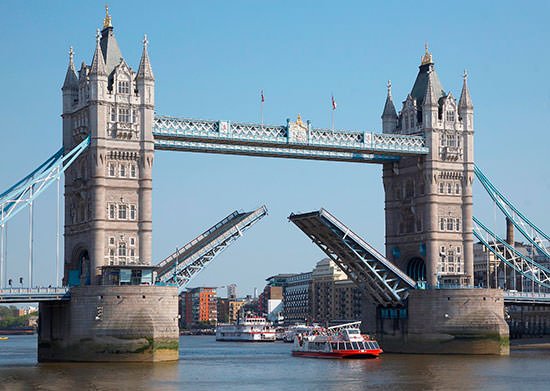
#10 THERE IS A CONTINUOUS LIVE ONLINE FEED OF THE BRIDGE
A live HD webcam has been placed in the vicinity of the bridge that captures it from end to end. It shows a time-lapse of live photos throughout the day that are updated frequently (every 5 minutes). People who wish to see the photos can scroll through images that have been captured in the past 24 hours. You can catch the bridge live on this link:- https://worldcams.tv/united-kingdom/london/tower-bridge. Viewers can notice ferries pass the raised bascule of the bridge, and red buses and yellow cabs pass the bridge, along with countless pedestrians. The night view of the bridge is majestic. People also often try to catch the transition in the time-lapse between 5:45 am and 6:15 am during sunrise.

